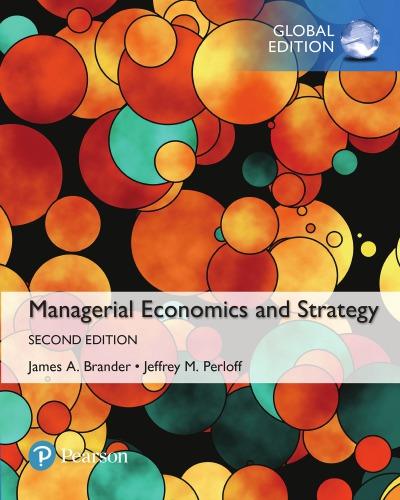9.1 The Jam Factory makes boutique jams that it sells in specialty stores in two different cities....
Question:
9.1 The Jam Factory makes boutique jams that it sells in specialty stores in two different cities.
In City 1, the daily inverse demand function is p1 = 12 - 0.5Q1 and the marginal revenue function is MR1 = 12 - Q1. In City 2, the inverse demand and marginal revenue functions are p2 = 20 - Q2 and MR2 = 20 - 2Q2. The firm’s cost function is C(Q) = 10 + 6Q, where Q = Q1 + Q2. Thus, the firm’s marginal cost of production is 6 per unit.
a. Create a spreadsheet with columns for Q1, Q2, p1, p2, MR1, MR2, and MC. Put the values 1 to 12 in increments of 1 in the Q1 column and put the same values in the Q2 column.
Fill in the appropriate formulas in the other cells, noting that the MC column has the value 6 for each quantity. The Jam Factory price discriminates by charging a different price in each city. Find the profit-maximizing quantities and prices. Verify that the marginal revenues are the same in each city at the profit-maximizing quantities. Determine the firm’s profit.
b. Add two columns to your spreadsheet showing the price elasticity of demand in each city for each price-quantity combination. Verify that your results are consistent with Equation 10.5.
(Hint: The price elasticity of demand for City 1 is e1 = -2p1/Q1 and for City 2 is e2 = -p2/Q2. )
Step by Step Answer:

Managerial Economics And Strategy
ISBN: 9780135640944
2nd Global Edition
Authors: Jeffrey M. Perloff, James A. Brander






